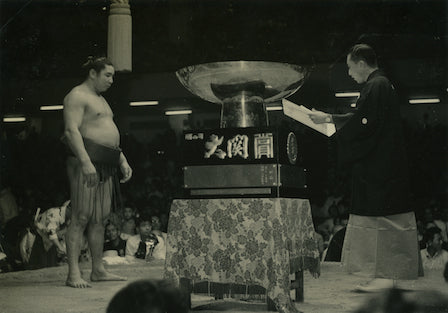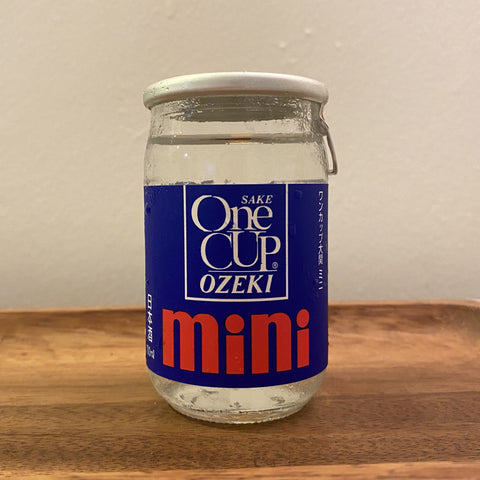The Ozeki Brewery
The original Ozeki Brewery in Japan was founded in 1711 by Ozakaya Chobei in Imazu Village of Hyogo Prefecture, under the brand name “Manryo”, which is the namesake of a type of ship used to carry and transport sake. This name was eventually changed to the “Ozeki” that we know today, and the brewery has become an internationally well-known sake brand, in no small part due to their innovative contribution to the world of sake and the brand’s association with Japanese sporting culture.

A Manryo - a sake carrying ship (Image Source: ozeki.co.jp)
Ozeki Brewery is no stranger to creative marketing campaigns that reiterate the brand’s relationship with Japan’s sporting culture. The brand’s name “Ozeki” itself is a reference to the “Ozeki” rank in the world of sumo wrestling, being the highest level attainable by sumo wrestlers at the time. In 1958, the Ozeki brewery started sponsoring the Ozeki Cup for Sumo Tournaments. The brewery has since been awarding and gifting sumo wrestlers who have won the Grand Sumo Tournament with “The Ozeki Cup”, certificates of commendation, and even sake.


The Ozeki Cup Sumo Tournament (Image Source: ozeki.co.jp)
A Prelude to the Ozeki One Cup Sake
Today, if you pop into most stores that sell sake or any convenience store in Japan, you’re bound to chance upon these little glass cups of sake for you to conveniently grab and have one on the go. If you lived through the 1960s and wanted to have a sip of sake, your options were limited to committing to an Isshobin, a 1.8 litre bottle, which was the standard size for sake back in the day. Not the most convenient thing if you just wanted to enjoy a little sip on your own while you were on the go.
Around this period, the sake category in Japan was facing another tough competitor – beer. In 1959, beer consumption had surpassed consumption of sake in Japan, amidst slumping sake sales and the popularity of beer among Japan’s youth.

A 1969 ANA Ticket advertising the One Cup.
The convenient size and design of beer cans made the drink accessible for anyone to pop one upon and enjoy a drink any time. In contrast, a bottle of sake had to be opened and poured into a cup to be consumed, and a large bottle was usually shared among a group of people. What seemed to be a simple matter of design and packaging was starting to pose an existential threat to the category of sake.
The Ozeki brewery interrupts this scene with a radical idea by the brewery’s president to package sake in a cup with the brand’s label on it and sell the product in a ready-to-drink format in a glass cup. Brainstorming and work on the design began in 1960.

One Cup Ozeki had utilised vending machines even before beers in Japan.
The design of the cup was made a priority in the product development of One Cup Ozeki. For the design of the cup and the label, Ozeki worked with Iwatoro Koike, an industrial designer and professor at Tokyo University of the Arts as well as Joji Matsukawa, a professor at Joshibi University of Art and Design.
Among the product’s design development priorities was a metal ring-pull top at the top of the glass cup to open the product. This ring-pull lid was reminiscent of the ring-pull at the top of beer cans, and was designed with the intention of appealing to beer drinker. The lid was also intentionally designed as such so that there would be no grooves on the glass where people would drink from, so it really felt like you were just drinking from a smooth glass cup. The sturdy and functional design of the glass cup, together with its one-person serving size of 180ml made the new ready-to-drink product accessible to anybody.
It was clear that Ozeki had one thing on their mind with this design – making this new ready-to-drink sake format as appealing and accessible as possible.
The 1964 Tokyo Olympics and The Shinkansen: One Cup Ozeki’s Bullet Train to Success
In 1964, One Cup Ozeki was launched on the very same day as the opening ceremony of the 1964 Tokyo Olympics. This wasn’t just a lucky coincidence. Ozeki foresaw the foreign visitors and international attention that the Olympics would bring to Japan, and wanted to opportunistically make its mark on the international scene. The iconic bright blue background of the label and striking stylized English font appealed not only to foreigners, but to the youth of Japan as well.

The One Cup Ozeki design launched the same day as the 1964 Tokyo Olympics opening ceremony (Image Source: ozeki.co.jp)
While the coinciding of the launch of One Cup Ozeki and the Tokyo Olympics was indeed opportunistic, there was another major event in Japanese history that helped to propel One Cup Ozeki to phenomenal success – the launch of the Tokkaido Shinkansen bullet train from Tokyo to Osaka. During One Cup Ozeki’s initial release, the product was strategically sold exclusively from Tokyo Station.
This ready-to-drink single-serve format was perfect for commuters who could grab a glass to enjoy on their commute on the bullet train from Tokyo to Osaka. In 1967, Ozeki introduced the very first sake vending machines to sell One Cup Ozeki – selling cups of One Cup Ozeki at 100 yen per glass. The accessibility of its price point, 24-hour convenience of a vending machine, and handy single-serving size made it a hit with Japan’s thirsty, blue-collared workforce looking to grab a drink at the end of a long workday.

Launch of the Tokkaido Shinkansen at Tokyo Station in 1964 (Image Source: cdn-japantimes.com)
Today, many other brands have followed Ozeki’s lead in developing sake in single-serve ready-to-drink glass cups, and this format has become ubiquitous in many sake stores, Japanese convenient marts, and supermarkets. The impact of Ozeki is widely felt in the sake category, and the brand continues to iterate to improve its product design and expand its product range.
One Cup Ozeki - Review

Tasting Notes
Nose: Fragrant aroma of sweet rice
Taste: Well-balanced notes of warabi-mochi, kinako, with a slight acidity on the finish.
Texture: Light and smooth texture that goes down easily
One Cup Ozeki Premium Daiginjo - Review

Tasting Notes
Nose: Light and clean aroma
Taste: Crisp, clean, and dry taste with light umami flavours
Texture: Slightly more medium-bodied, relative to the One Cup Ozeki
My Thoughts
The One Cup Ozeki is a sweet and simple, uncomplicated Futsushu sake (Futsushu refers to table sake, or any sake that doesn't fall under any of the special sake grades). This is a well-made Futsushu sake for sure - not a bad choice at all if you're looking for a convenient glass of decent sake.
My Rating |
🍟The McDonald's of sake! Uncomplicated, reliable, convenient - you know you can count on the One Cup Ozeki or the One Cup Ozeki Premium Daiginjo to be there when you need a little mood-booster. |
Overall, I would say that to me, One Cup Ozeki is almost like the McDonald's of sake, and not in a bad way at all. It's all the things we love about McDonald's - highly accessible, sweet, uncomplicated, and you know what you're going to get with this. You just know you're going to be having a good time.
Happy sipping!

@ChopstickPride








